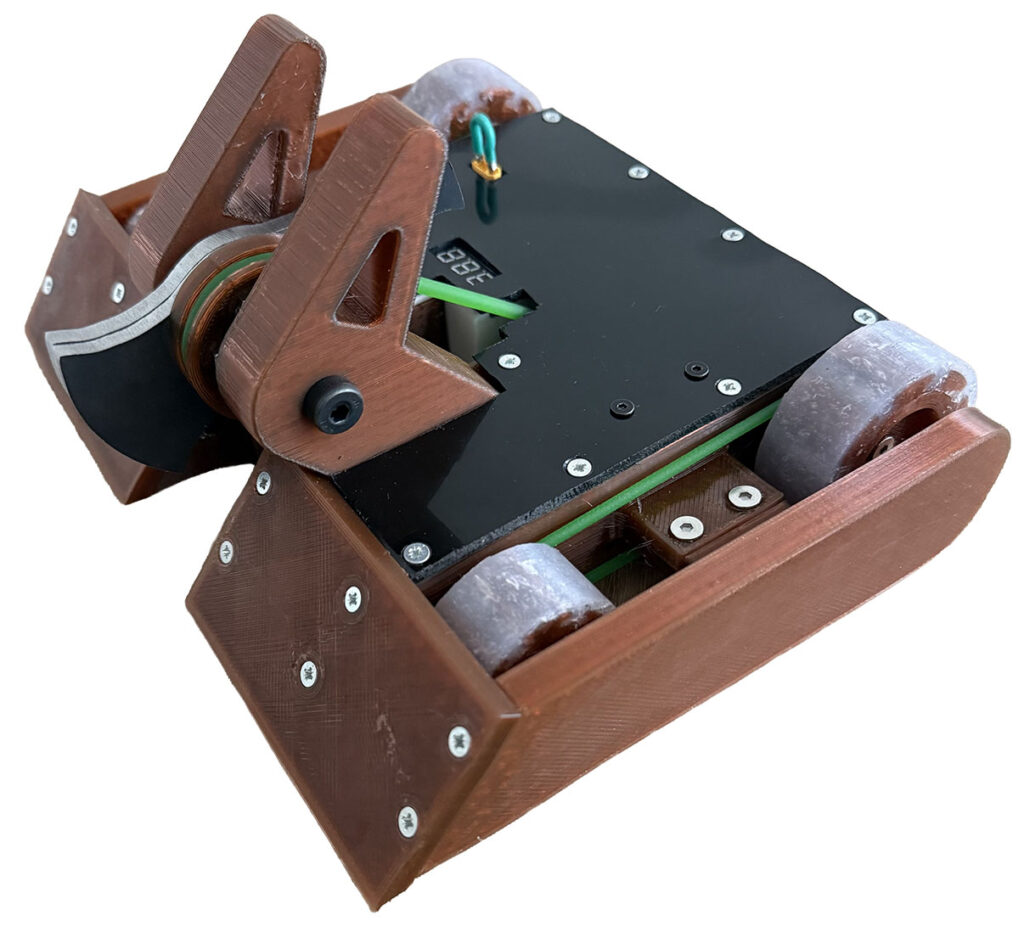Beetleweight

Beetleweight weight class
The Beetleweight class is one of the most widespread and popular robotic weight classes. With an upper limit of 1.5 kg, it allows for the construction of very powerful robots capable of carrying full-fledged rotational, kinetic, or impact weapons. Unlike lighter categories (Ant or Fairy), not only design and material selection play a greater role here, but also drive performance and component durability.
Typical characteristics:
- Weight limit: 1.5 kg.
- Dimensions: not as strictly limited as in Ant weight, but the robot must be able to fit into the competition arena and start the fight in the starting zone (usually approx. 30 × 30 cm).
- Materials:
- Lightweight construction materials – aluminum, titanium, hard polycarbonate (Lexan), FR4 (printed circuit boards).
- Durable and flexible materials – carbon fiber, high-strength plastics, rubber for wheels.
- Weapons – hardened steel, tool steel, or titanium are often used here. Due to the greater force of the blows, these parts must be significantly more robust than in Ant weight.
- Electronics and motors: typically motors from model making (drone motors, geared DC motors, brushless setups with ESC) – already powerful enough to handle active rotating weapons.
Beetleweight is the ideal compromise: large enough to showcase full-fledged battles with weapons, but still relatively inexpensive and portable.
Rules for the Beetleweight category
1.1. Maximum robot weight
Each robot in the Beetleweight category may weigh a maximum of 1.5 kg. This limit includes all parts of the robot, batteries, and equipment. The robot must be complete and within the specified limit at the start of the match.
1.2. Movement mechanisms and advantages
Unlike the Antweight category, there is usually no weight increase for alternative movement (walker, shuffle). All robots – whether they move on wheels, tracks, or legs – have the same 1.5 kg limit.
- However, some competitions may allocate bonus weight (e.g., 100–250 g extra) for walking robots to encourage creative designs. It is therefore advisable to always check the rules of the specific event.
1.3. Clusterbot (multi-part robot)
Robots composed of multiple parts – so-called Clusterbots – are allowed. The following rules apply:
- The total weight of all parts must not exceed 1.5 kg.
- If, during a match, a part stops working or is eliminated, the remaining parts may continue to fight if they are capable of independent movement.
- A victory is only counted if at least one part of the cluster remains in motion.
1.4. Safety restrictions
Due to the higher weight and energy of the weapons, safety is crucial in Beetleweight:
- All sharp edges must be covered during transport and outside the arena.
- Active weapons (rotors, drums, discs) must have a safety link – a removable safety connector that immediately disconnects the power supply.
- Failsafe systems in the receiver are mandatory: if the signal is lost, the robot must immediately stop moving and the weapon must stop firing.
1.5. General design requirements
- The robot must not contain firearms, chemical, liquid, or explosive weapons.
- Only mechanical and electrical systems are permitted – rotating weapons, hammers, wedges, lifters, etc.
- The design must not endanger the arena or spectators – for example, excessive kinetic energy of a weapon may be limited by the organizer.
👉 The Beetleweight (1.5 kg) category thus represents an ideal competitive environment: enough space for more complex and powerful designs than in Ant weight, but still an accessible level where both hobby builders and advanced engineers can apply their skills.
Turn your ideas into reality with our components. You will find everything you need to build your champion in our e-shop.

